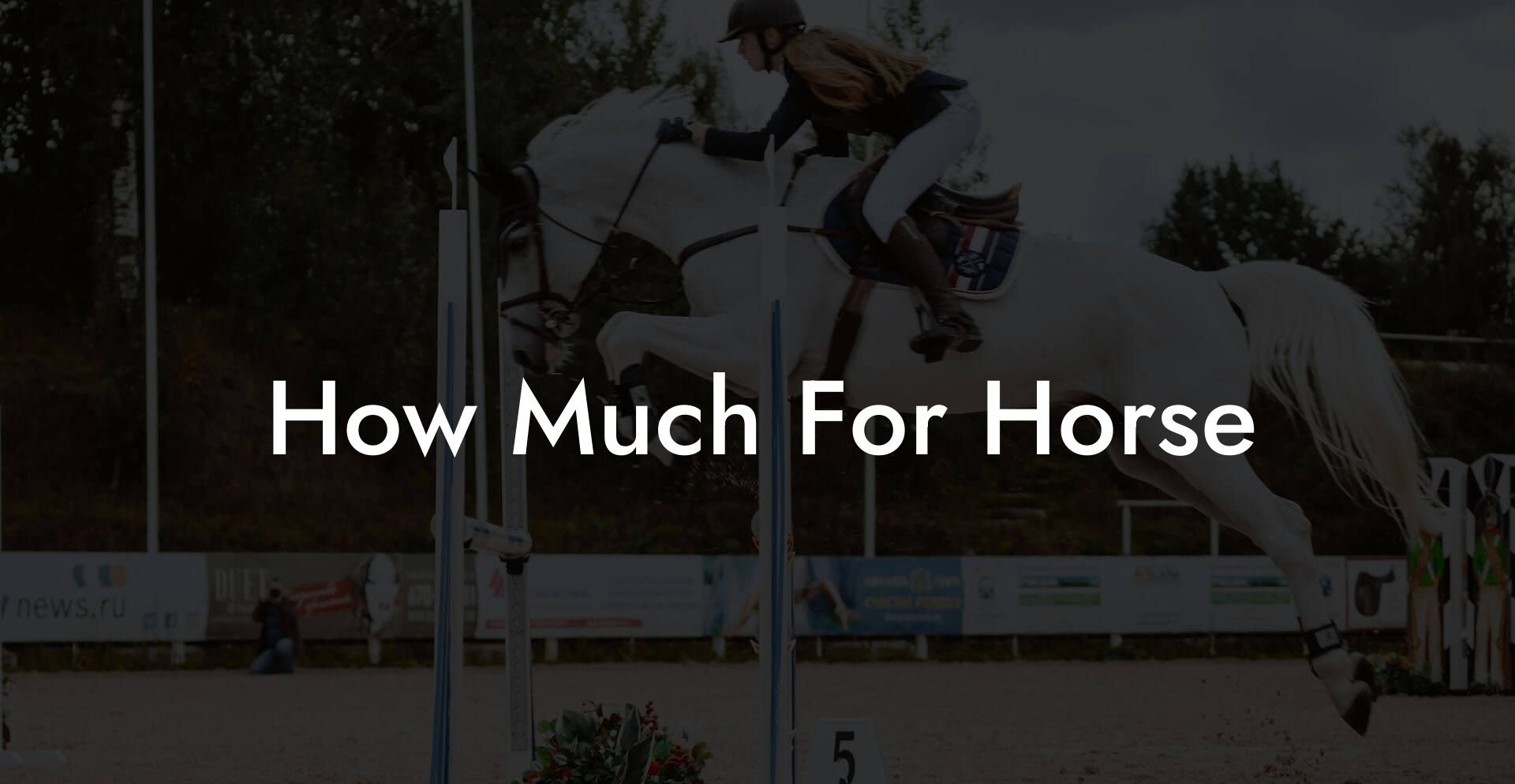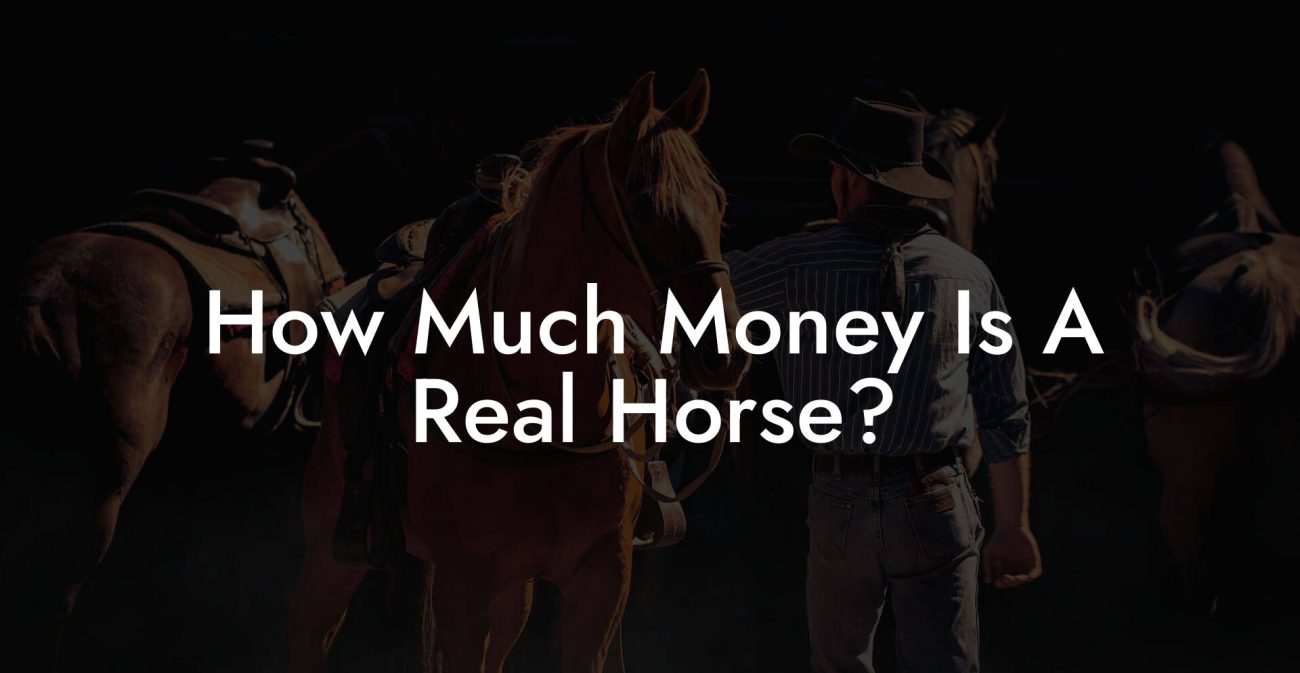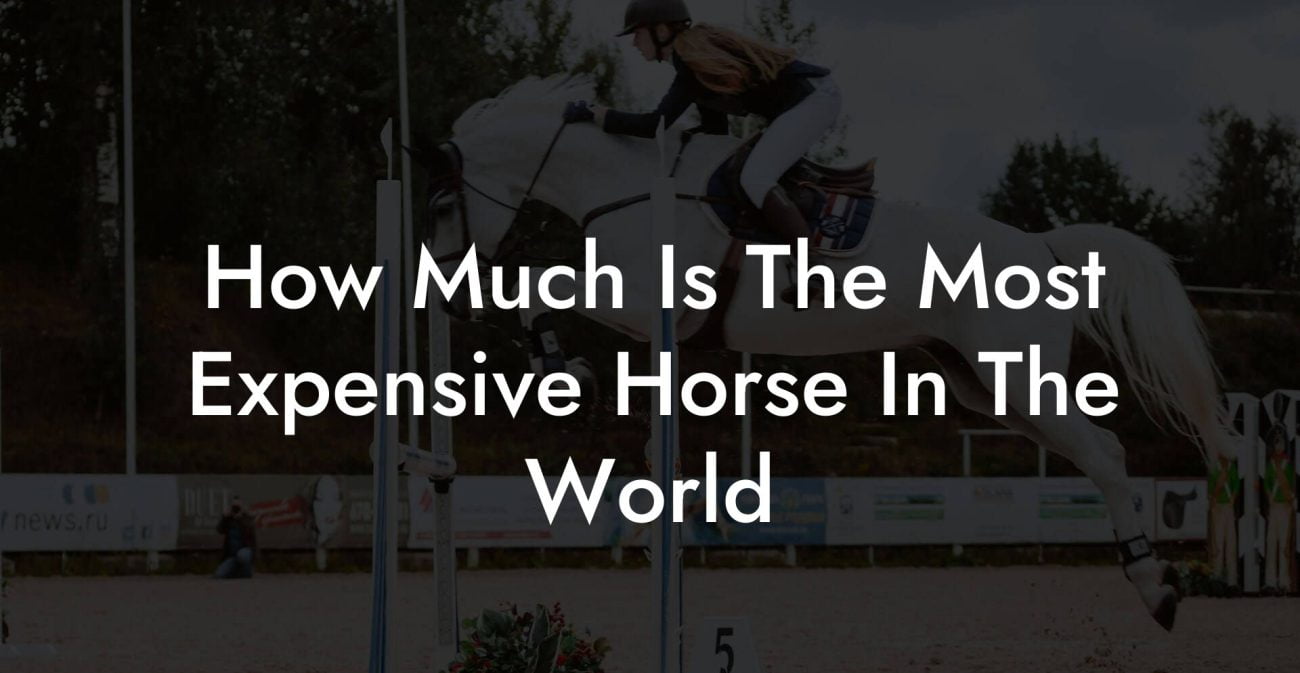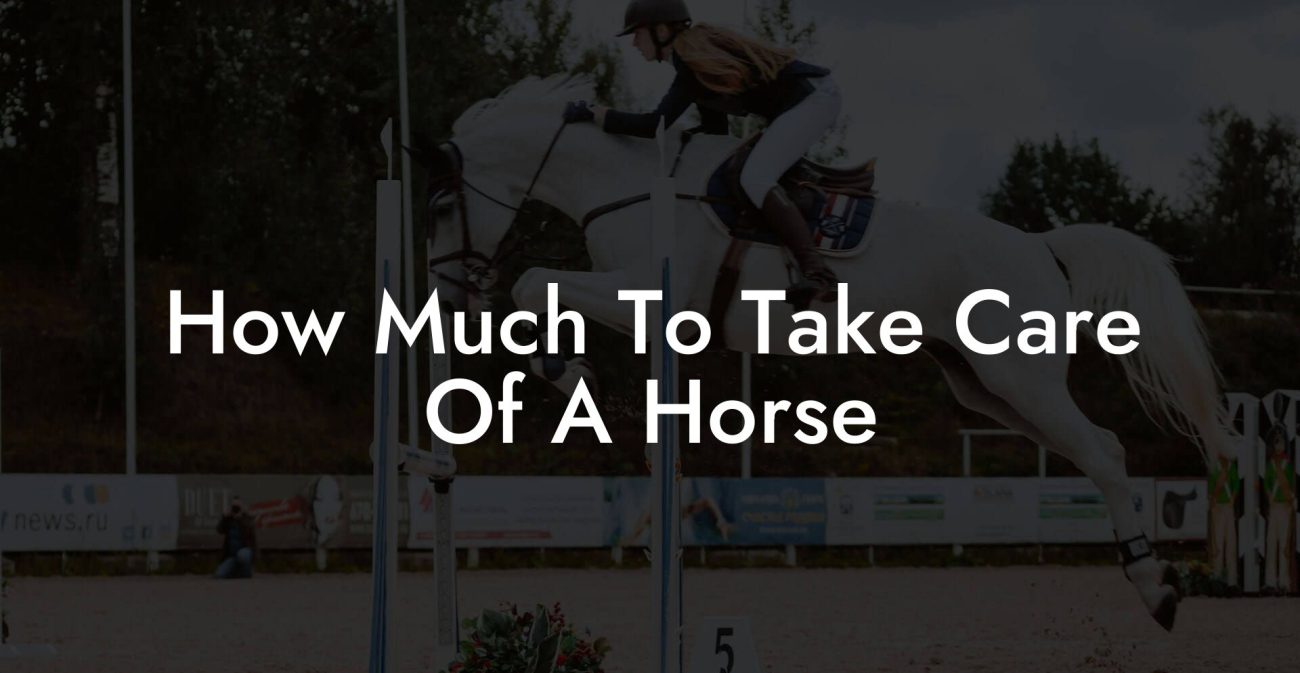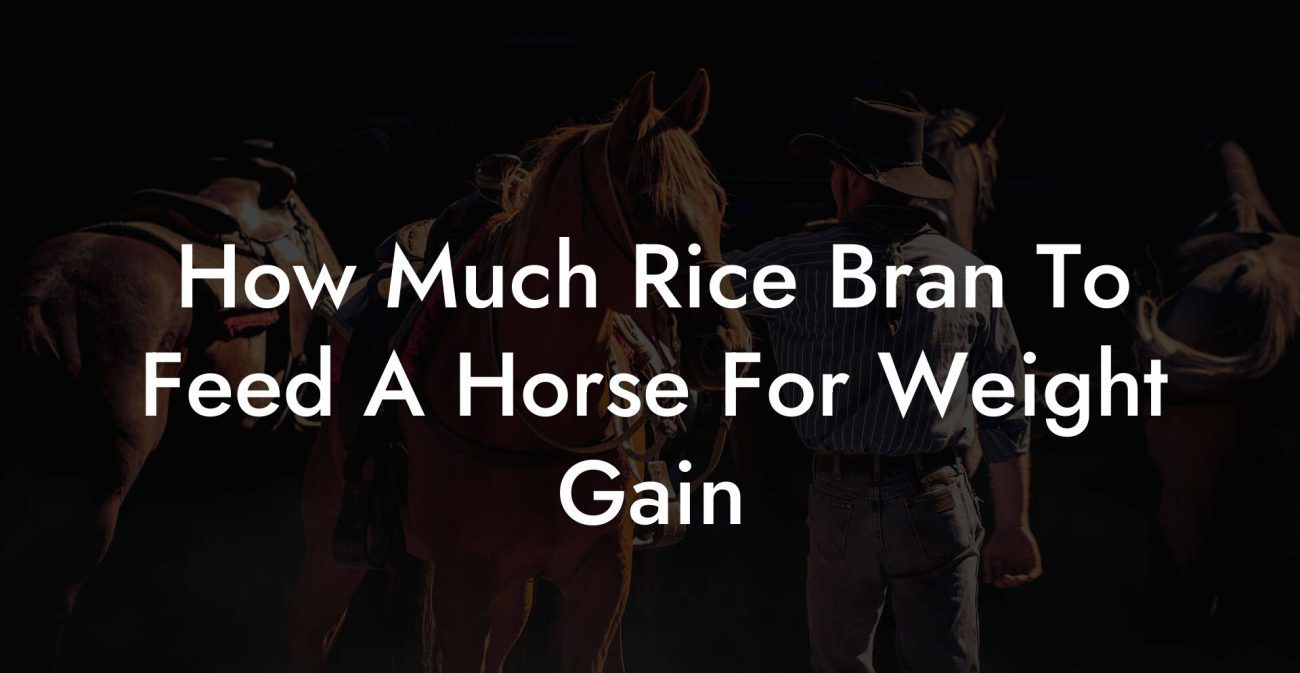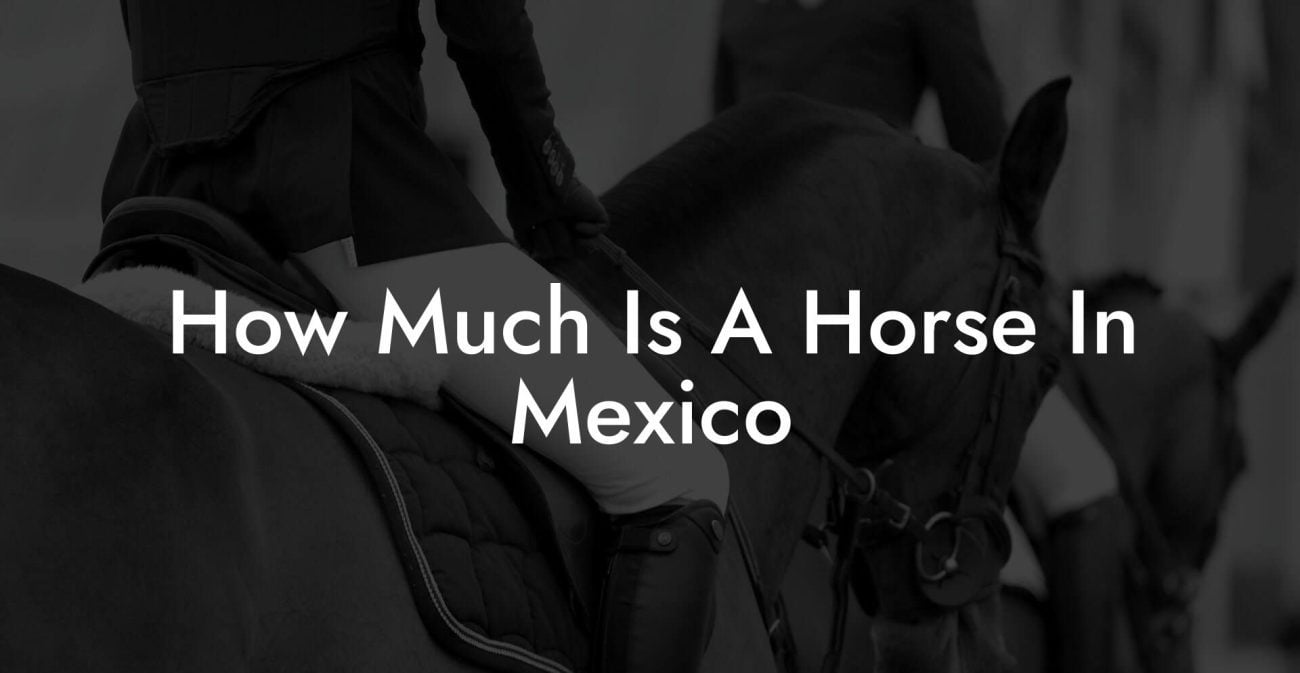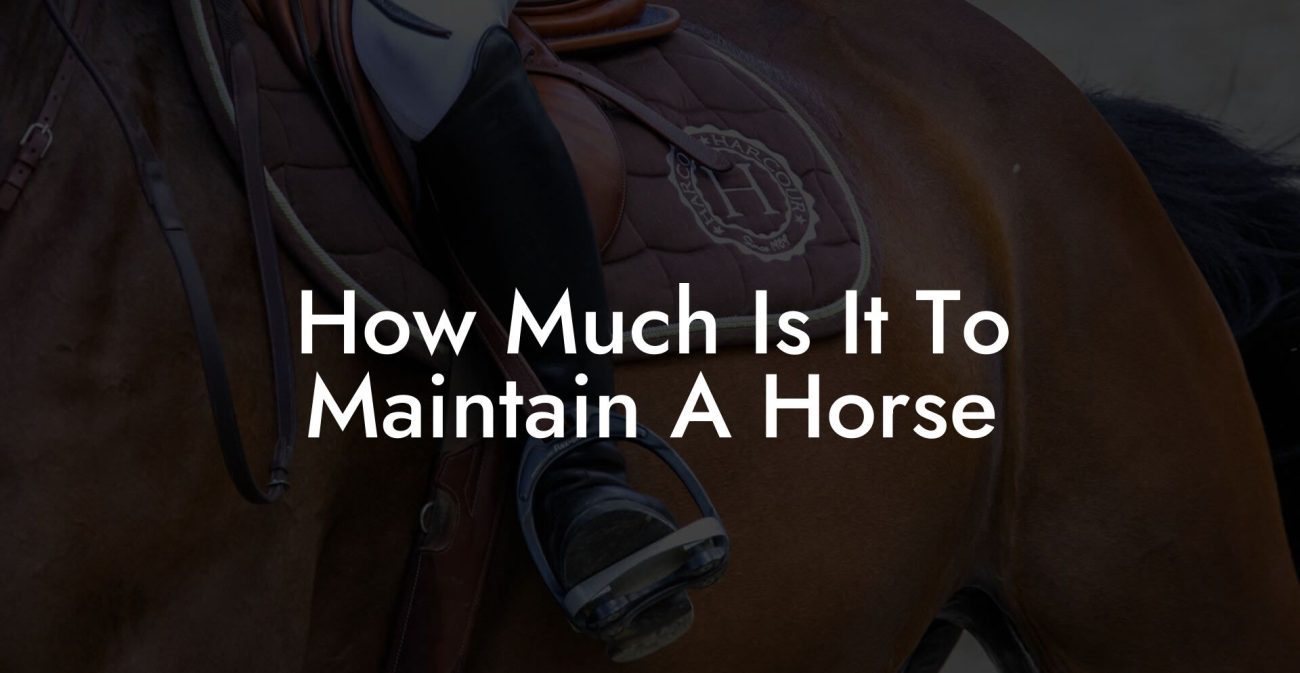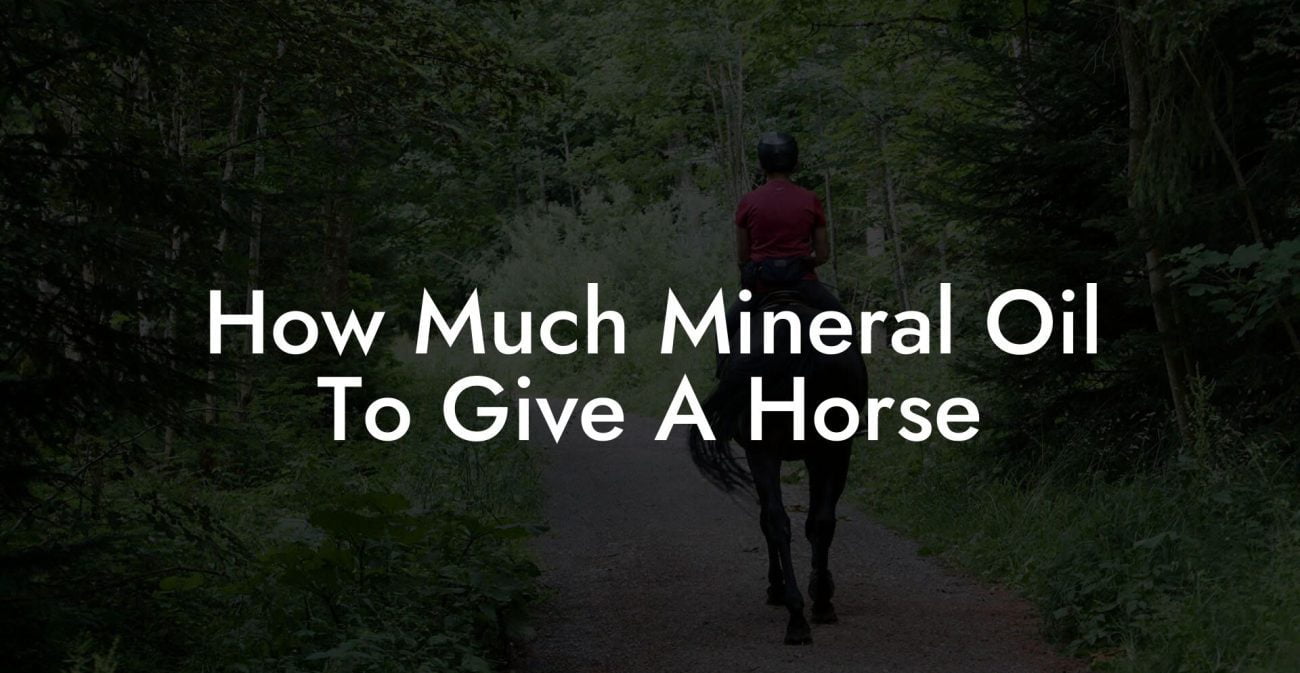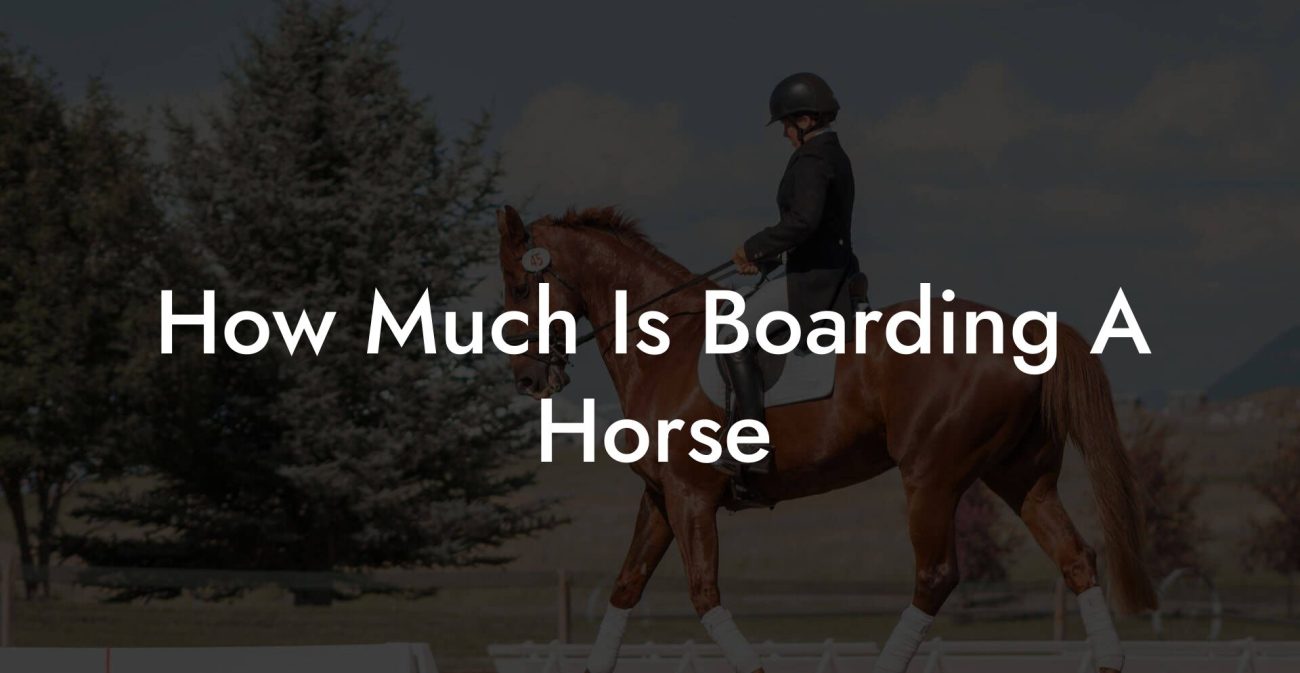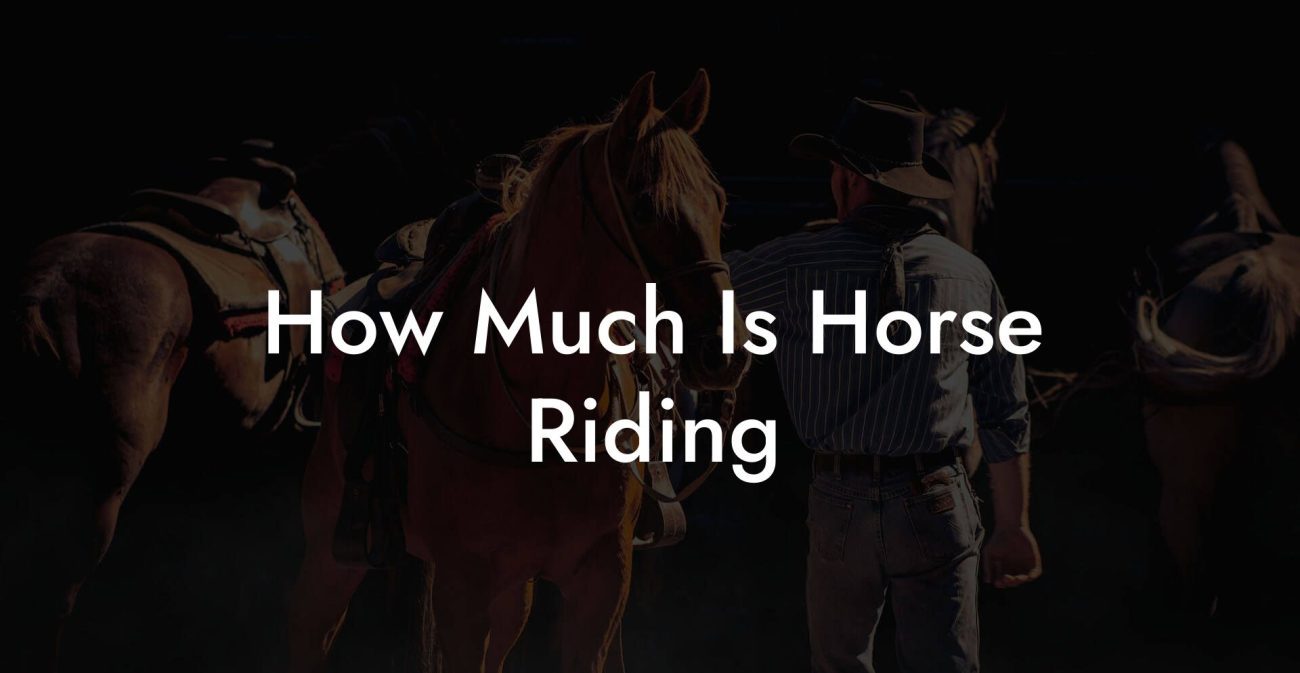Ever found yourself scrolling through endless horse memes while secretly wondering, “How much for horse?” If you’re a Gen-Z or millennial with a passion for equine adventures, grab your oat milk latte and settle in, this deep dive into the world of horse care and costs will take you from casual stable browser to confident hoof-beat enthusiast. We’re talking everything from the oh-so-exciting initial purchase, all the hidden expenses that sneak up on you like a mischievous colt, to savvy budgeting tips that even your student loan advisor would applaud.
Quick Links to Useful Sections
- Horse Ownership: More Than Just a Purchase
- Breaking Down the Costs of a Horse: Purchase, Care, and Beyond
- Initial Investment: Purchasing Your Equine Companion
- Ongoing Costs: The Reality of Daily Horse Care
- Feeding and nutrition
- Boarding, Stabling, and Pasture Management
- Veterinary Care and Health Maintenance
- Farrier, Grooming, and Miscellaneous Care
- Understanding the Hidden Costs: When the Unexpected Happens
- Budgeting and Financial Planning for Horse Ownership
- Economic Considerations for Different Lifestyles
- Tips for Gen-Z and Millennials: Affordable Equine Care Without Compromise
- Resources and Community Support: Your Next Steps
- Equestrian Success Stories: Real-Life Case Studies
- Case Study 1: From Dream to Reality on a Budget
- Case Study 2: Overcoming Unexpected Expenses with Strategic Planning
- Case Study 3: Innovating Community Solutions for Sustainable Horse Ownership
- Creating a Personalized Financial Plan for Your Horse
- Step 1: Assess Your Financial Landscape
- Step 2: Identify Essential Horse Ownership Costs
- Step 3: Set Realistic Goals and a Timeline
- Step 4: Explore Supplemental Income and Cost-Sharing Opportunities
- Step 5: Monitor, Adjust, and Celebrate Milestones
- Your Journey to Financially Savvy, Passionate Horse Care
- Equine FAQs: Your Top Questions Answered
- Your Equine Future: A Journey of Balance, Passion, and Pragmatism
Horse Ownership: More Than Just a Purchase
Owning a horse isn’t just about snapping the perfect Instagram photo or riding off into the sunset, it’s a lifestyle filled with breathtaking moments, endless affection, and yes, a financial reality check. When you’re considering, “How much for horse?” it’s not simply a question of dollars and cents; it’s about understanding the intricate dance between passion and practicality in every trot, canter, and gallop.
Whether you’re daydreaming about owning a majestic stallion or planning a weekend pony escape, there’s a lot more at stake than just the cost of feeding and grooming. Horse ownership can be compared to adopting a furry (or rather, four-legged) family member who comes with a voracious appetite, a penchant for mischief, and a bank account that requires serious financial planning. We’re here to break down every expense, from that jaw-dropping purchase price to the ongoing care costs, to help you decide if your wallet and your heart are ready for the ride.
Breaking Down the Costs of a Horse: Purchase, Care, and Beyond
When facing the question, “How much for horse?” you’ll soon discover that the costs involved span far beyond the sticker price you see at a sale. Owning a horse is like running a deluxe, all-inclusive resort, only instead of guests, you have a four-legged friend who demands premium accommodations, gourmet feed, regular maintenance, and specialized healthcare services.
Let’s dig into the nitty-gritty details that every aspiring horse owner should know:
- Initial Purchase Price: The cost to buy a horse can vary dramatically depending on breed, age, pedigree, and training level.
- equipment and Tack: From saddles and bridles to halters and grooming kits, there’s a fairly steep startup cost to get your horse properly equipped.
- Boarding and Stable Fees: Not everyone has a sprawling pasture at home. Boarding your new friend in a professional stable can be a significant monthly expense.
- Feeding and Supplements: Quality feed isn’t cheap, and the nutritional needs of a horse go beyond hay.
- Veterinary Care: Routine check-ups, vaccines, dental care, and unexpected medical needs can add up fast.
- Farrier and Hoof Care: Regular hoof trimming and shoeing are essential for a healthy, happy horse.
- Insurance and Miscellaneous Costs: Think about liability, accidental injuries, and other unforeseen expenses.
By understanding the full spectrum of costs, you can prepare yourself for a rewarding journey that balances love, dedication, and financial savvy.
Initial Investment: Purchasing Your Equine Companion
The first step on your equine adventure often begins with the thrilling, yet intimidating, initial purchase. Depending on where you’re shopping, from an online auction to a reputable breeder, the price tag can range from a few thousand dollars to a jaw-dropping sum for champion bloodlines.
Factors That Influence the Purchase Price:
- Breed & Pedigree: Purebreds and horses with a well-documented lineage tend to have higher price tags. Racing and show horses, for example, can command premium rates.
- Age & Training: A young, untrained horse might be more affordable, but the costs of training and molding them into a versatile companion can add up. Conversely, a well-trained horse comes at a premium but might save you time and potential frustration.
- health & Condition: Veterinary records, overall health, and temperament all affect the purchase price. A horse in pristine condition with a clean bill of health will naturally cost more than one with neglected care.
- Market Demand: Economic factors, regional supply, and even trends in equestrian sports can impact prices. Trends come and go, but a quality horse’s value endures.
If you’re budgeting for your dream horse, factor in not just the purchase price but also pre-purchase veterinary examinations, transportation costs, and any additional fees charged by sellers. Always remember: sometimes a higher upfront cost can mean a lower long-term investment if you’re getting a horse that will require fewer repairs, both health and structural.
Ongoing Costs: The Reality of Daily Horse Care
Once you’ve taken the plunge and purchased your equine companion, the perpetual question of “How much for horse?” transforms from a one-time inquiry to an ongoing conversation with your bank account. Owning a horse is akin to running your own mini ranch, a combination of routine care, emergency fixes, and a few unexpected “surprises” along the way.
Feeding and nutrition
Feeding your horse is a daily commitment that goes way beyond simply tossing a bucket of hay. High-quality hay, grains, and specially formulated feed mix provide your horse with the energy and nutrients needed for performance and health. Here’s what you need to know:
- Hay and Forage: Expect to spend a significant chunk of your monthly budget on hay, a staple in every horse’s diet. The cost can vary based on the region, quality, and seasonal availability.
- Grains and Concentrates: Depending on your horse’s activity level and nutritional needs, grains and concentrates might be required. Premium feeds designed for high-performance horses tend to be expensive.
- Supplements: Vitamins, minerals, joint support, and other specialized supplements are often recommended and can add up over time.
For the eco-conscious and savvy millennial, exploring local feed co-ops or even starting a small forage garden might help cut costs while ensuring a fresh supply for your equine friend.
Boarding, Stabling, and Pasture Management
Not every aspiring horse owner lives on a sprawling farm. If you’re renting stable space or boarding your horse at a professional facility, expect a significant portion of your budget to be allocated here.
- Stable or Boarding Fees: Depending on the region and level of care, boarding fees can vary dramatically. Top-notch stables offer amenities like regular cleaning, daily turnout, and expert feeding, all of which come at a premium.
- Pasture Maintenance: If you’re managing your own pasture, consider periodic costs for fencing, manure management, and field maintenance. This is also an opportunity to get creative with eco-friendly solutions that reduce long-term expenses.
- Utilities and Infrastructure: Running water systems, maintaining barns, and ensuring safe, sturdy shelters require ongoing investments in repairs and upgrades.
Veterinary Care and Health Maintenance
Your horse’s well-being is paramount, and regular veterinary care is essential to keeping them in top shape.
- Routine Check-Ups: Annual or bi-annual vet visits to monitor your horse’s health, administer vaccinations, and perform dental examinations are non-negotiable.
- Emergency Care: Just like with any pet or even human health, emergencies can and do happen. An unexpected illness, injury, or even colic can lead to substantial emergency expenses.
- Preventive Treatments: Regular deworming, vaccinations, and specialized treatments (think dental care) should be factored into your monthly or annual budget.
- Travel and Transport: When veterinary visits require specialized transport or if you need an emergency transport service, these costs add up quickly.
A proactive approach to equine health, timely treatments, regular check-ups, and preventive care, can help mitigate larger bills down the road. Think of it as an investment in longevity and happiness for your equine companion.
Farrier, Grooming, and Miscellaneous Care
Another critical aspect of horse care is regular hoof maintenance and grooming. Here’s what you should budget for:
- Farrier Services: A farrier will trim your horse’s hooves every 6-8 weeks, and if your horse requires shoes, that service can double the cost. Regular farrier visits prevent lameness and ensure proper gait.
- Grooming: Daily grooming supplies, such as brushes, combs, hoof picks, and specialized shampoos, are essential to keeping your horse clean and healthy. While individual items might seem cheap, they add up over time.
- Equipment Repair and Replacement: Tack, saddles, bridles, blankets, and other riding gear need periodic repair or replacement due to wear and tear. Keeping your gear in top shape is not only a matter of upkeep but also safety.
Regular investment in grooming and farrier services pays dividends in terms of your horse’s comfort and performance. Besides, nothing beats the look of a well-groomed horse strutting around the pasture!
Understanding the Hidden Costs: When the Unexpected Happens
Despite your best planning, owning a horse often involves surprises, both joyful and challenging. The hidden costs of horse ownership can catch you off guard if you’re not prepared:
- Emergency Veterinary Bills: Accidents happen. Whether it’s colic, an injury sustained during play, or an unforeseen illness, emergency treatments can rack up bills quickly.
- Unexpected Equipment Repairs: A broken saddle, damaged tack, or malfunctioning barn utilities may require immediate attention.
- Specialized Treatments: Sometimes, your horse might need extra therapeutic treatments like chiropractic care, acupuncture, or even laser therapy to aid recovery from an injury.
- Insurance Premiums: While optional, equine insurance can help mitigate these surprises. However, the premiums themselves are an ongoing expense.
A good rule-of-thumb is to always have a contingency fund. Much like an emergency savings account for your own life, setting aside a small percentage of your monthly budget for unexpected equine expenses can be a lifesaver, both emotionally and financially.
Budgeting and Financial Planning for Horse Ownership
Given the plethora of expenses (both expected and hidden), budgeting for a horse is no small task. It involves careful planning, realistic forecasting, and sometimes even a bit of creative lifestyle adjustments.
Here are some guiding principles to keep your finances, and your horse, happy:
- Detailed Expense Breakdown: Create a spreadsheet that outlines all potential expenses, from purchase fees to daily feed and emergency funds. This transparency helps you understand where every dollar is spent.
- Contingency Fund: Allocate at least 10-15% of your monthly equine budget to unexpected costs. This fund can cover emergency veterinary care, equipment repairs, or even last-minute boarding fees.
- Regular Financial Reviews: Just like your horse needs regular check-ups, your budget should be reviewed frequently. Adjust your spending as needed to ensure your long-term financial commitments are being met.
- Community and Group Buying: Consider joining local equestrian groups or online communities where members often share discount offers, recommended vendors, and even opportunities for group purchases of feed or equipment.
Budgeting effectively isn’t about cutting corners, it’s about being prepared for every twist and turn on your equine journey. By staying ahead of the financial game, you ensure that both you and your horse can focus on what truly matters: the joy, freedom, and endless adventures that come with horse ownership.
Economic Considerations for Different Lifestyles
The beauty (and challenge) of horse ownership is that it isn’t a one-size-fits-all experience. Your lifestyle, geographic location, and personal aspirations significantly influence the overall cost structure.
Ranch or Farm Ownership: For those blessed with ample space and a love for rural living, managing your own pasture can be cost-effective in the long run. However, the initial investment in land, fencing, and barn maintenance can be a considerable upfront expense.
Boarding and Stabling: If you reside in an urban or suburban area, boarding services might be your only option. While boarding offers convenience and professional care, it does add a recurring cost to your monthly expenses, with prices often influenced by location and facility standards.
Competitive vs. Leisure Riding: Are you aiming for the competitive circuit, or is your horse your escape from the daily grind? Competitive riding might entail additional costs, such as specialized training, competition fees, and premium healthcare services to maintain peak performance.
No matter your circumstances, remember that the initial “price tag” of a horse is only a fraction of the long-term financial commitment. Tailor your expectations and your budget to align with your lifestyle choices, and you’ll be well-prepared to enjoy every stride of your journey.
Tips for Gen-Z and Millennials: Affordable Equine Care Without Compromise
Let’s be honest, budgeting for a horse might sound like a high-stakes challenge, especially when you’re juggling student loans, side hustles, and a love for artisanal coffee. But if you’re resourceful, passionate, and ready to blend modern tech with timeless horse care wisdom, you can absolutely make equine dreams come true without breaking the bank.
Check out these savvy tips designed for the modern, money-wise equestrian:
- Embrace DIY Grooming: Learn how to groom your horse yourself by watching online tutorials. Not only does this build a stronger bond, but it also saves you countless dollars on professional grooming services.
- Buy Second-Hand Gear: High-quality tack and equipment don’t always have to come new. Check out online marketplaces, local auctions, or even equestrian swap meets for gently used items.
- Leverage Social Media Communities: Follow Facebook groups, Instagram profiles, and Reddit threads where fellow horse enthusiasts share money-saving hacks, vendor discounts, and local recommendations.
- Share the Load: Consider horse-sharing or leasing arrangements. This way, you split costs with other passionate riders while still enjoying time around your furry friend.
- Stay Proactive with Preventive Care: Regular check-ups, routine farrier visits, and proper nutrition can ward off expensive emergencies. Prevention is the best (and most cost-effective) form of care.
- Explore Local Cooperative Programs: Some communities offer group discounts on feed, equipment, or even veterinary services. It’s all about harnessing the power of the community.
With a bit of creativity and a savvy approach to spending, you can enjoy all the joys of horse ownership while keeping your finances on track. Remember, your commitment to quality care doesn’t have to come with a premium price tag if you know where to look and how to budget.
Resources and Community Support: Your Next Steps
As you navigate the exhilarating, and sometimes wallet-wrenching, world of horse care, remember you’re not alone. There are countless resources and communities out there to support your journey:
- Online Forums & Social Media Groups: Platforms like Reddit’s r/Equestrian, Facebook groups dedicated to horse care, and Instagram hashtags can connect you with both seasoned owners and fellow newbies. These communities are treasure troves of advice, vendor recommendations, and real-life experiences.
- Local Equestrian Clubs: Many areas have clubs or riding schools that offer workshops, clinics, and social gatherings. These provide excellent networking opportunities and firsthand insights into managing costs and enhancing your horse care skills.
- Financial Workshops and Budgeting Apps: Tech-savvy equestrians can use apps like Mint, YNAB, or even specialized equine budgeting tools to keep track of expenses and plan for future costs.
- Veterinary and Equine Care Websites: Trusted sources like The Horse, Equus Magazine, and various veterinary school websites offer in-depth articles on preventive care, emergency tips, and cost-saving advice for common equine issues.
- Local Feed Suppliers and Tack Shops: Don’t hesitate to build a rapport with local vendors. Often, repeat customers can negotiate discounts or receive advance notices on upcoming sales and new products.
Your next steps in the equine journey should involve tapping into these communities, asking questions, absorbing knowledge, and gradually building both your expertise and your support network. Whether it’s online or face-to-face, community support can be the game changer that makes all the difference.
Equestrian Success Stories: Real-Life Case Studies
Nothing illustrates the triumphs and challenges of owning a horse quite like a few real-life success stories. These narratives highlight how a mindful approach to budgeting, smart decision-making, and community support turned financial obstacles into stepping stones for a fulfilling equine adventure.
Case Study 1: From Dream to Reality on a Budget
Jessica, a young creative professional with a deep passion for horses, always dreamed of owning an equine companion despite working a minimum wage job after college. By joining a local horse-sharing cooperative and leveraging online communities, she learned to split the expenses involved in boarding, feed, and care. With diligent budgeting and a commitment to preventive care, Jessica’s shared pony not only transformed her lifestyle but also blossomed into a stable presence in her tight-knit rural community. Her story is a testament to how resourcefulness and community can turn a seemingly impossible dream into a sustainable lifestyle.
Case Study 2: Overcoming Unexpected Expenses with Strategic Planning
Mark, a freelance graphic designer known for his quirky style and love for vintage charm, purchased his first horse with a mix of excitement and trepidation. Shortly after acquiring his horse, an unexpected bout of colic led to emergency vet bills that threatened to derail his budget. However, thanks to a well-established emergency fund and the advice of seasoned horse owners in his online group, Mark navigated the crisis without sacrificing his dream. By tweaking his monthly budget and prioritizing preventive healthcare from then on, he not only stabilized his finances but also discovered new ways to optimize costs in other areas of horse care.
Case Study 3: Innovating Community Solutions for Sustainable Horse Ownership
In a small town known for its vibrant art scene and entrepreneurial spirit, a group of young horse enthusiasts decided to pool their resources. Instead of each shouldering the heavy financial burden, they set up a cooperative where costs for boarding, feed, and even emergency care were shared. Through collective buying and scheduled maintenance sessions, they reduced individual expenses significantly. This creative approach not only preserved their finances but also fostered a tight-knit community where knowledge was freely exchanged and every member’s experience enriched the collective wisdom.
These case studies underscore one clear message: with careful planning, a supportive community, and a proactive approach, the challenges of horse ownership can be transformed into opportunities for growth, creativity, and shared success.
Creating a Personalized Financial Plan for Your Horse
No two equine journeys are alike, and neither are the financial plans needed to support them. Whether you’re dreaming big or starting small, building a personalized plan is key. Here’s a step-by-step process to help you design a financial roadmap that works for you:
Step 1: Assess Your Financial Landscape
Record your current income, monthly expenses, and any existing savings. Understanding where you stand financially is the first step toward planning for horse care expenses.
Step 2: Identify Essential Horse Ownership Costs
Create a detailed list of all expected costs, purchase price, feed, boarding, veterinary care, farrier visits, and emergency funds. Prioritize these expenses to ensure that the essentials are always covered.
Step 3: Set Realistic Goals and a Timeline
Whether you plan to acquire a horse in the near future or gradually build your equine portfolio, define clear funding goals and a timeline for each expenditure. This might include setting aside a specific amount each month or saving for a particular piece of equipment.
Step 4: Explore Supplemental Income and Cost-Sharing Opportunities
Consider side hustles, freelance gigs, or equestrian-related part-time ventures to supplement your income. Look for opportunities to share costs with other horse enthusiasts through buying cooperatives or communal boarding arrangements.
Step 5: Monitor, Adjust, and Celebrate Milestones
Keep track of your expenses and savings growth. Regularly assess your financial plan and make adjustments as needed. Celebrating each financial milestone, whether it’s reaching your emergency fund goal or successfully negotiating a discount, can keep you motivated on your journey.
By tailoring your financial plan to your unique needs and circumstances, you ensure that every dollar you invest contributes to a rewarding and sustainable horse ownership experience.
Your Journey to Financially Savvy, Passionate Horse Care
The quest for knowing “How much for horse” isn’t just about crunching numbers, it’s about embracing a lifestyle filled with heart, humor, and the occasional high-stakes financial sprint. Owning a horse is a multifaceted commitment that weaves together passion, responsibility, and smart financial strategies.
As you navigate this exciting world, remember that every bit of research, every community-shared tip, and every proactive budgeting decision builds a foundation for long-term success and fulfillment. Whether you’re taking your first step into the equestrian arena or deepening an established bond, being financially savvy empowers you to focus on what truly matters: the joy, freedom, and adventure that comes with caring for a magnificent horse.
Embrace the journey with an open mind and a well-planned budget. Let your love for horses guide you through every challenge and triumph. With the right financial plan, a supportive community, and a bit of ingenuity, you can transform the daunting question of “How much for horse?” into an anthem of empowered, economical, and exhilarating equine care.
So saddle up, keep your wallet ready, and enjoy every moment along the way. Your equine adventure awaits, and each step is a leap towards financial wisdom and lasting memories.
Equine FAQs: Your Top Questions Answered
Navigating the financial and practical landscape of horse care can raise a lot of questions. Here are some of the most commonly asked questions that dive into the intricacies of equine ownership, answers that are sure to clear up any lingering doubts.
1. How much does it typically cost to purchase a horse?
The purchase price can vary dramatically based on factors such as breed, training level, and pedigree. Prices can range anywhere from a few thousand dollars for a well-behaved, untrained horse to significantly higher amounts for a champion or pedigreed animal.
2. What are the most significant ongoing costs in horse ownership?
Beyond the initial purchase, the biggest ongoing expenses include boarding or stable fees, quality feed, routine veterinary care, farrier and hoof care, and the cost of essential equipment and supplements.
3. Are there any hidden costs I should be aware of?
Yes, unexpected expenses like emergency veterinary bills, equipment repairs, and specialized treatments can add up. It’s wise to have an emergency fund in place.
4. How can I reduce costs as a young horse owner on a budget?
Consider buying second-hand gear, joining cooperative riding or boarding arrangements, learning DIY grooming techniques, and staying active in online communities where cost-saving tips are shared daily.
5. Is equine insurance worth the cost?
While optional, equine insurance can provide financial protection against unexpected emergencies or major health issues. It’s advisable to evaluate your risk factors and consult with a trusted provider.
6. How should I budget for routine veterinary and farrier care?
Build a monthly budget and set aside funds specifically for routine care. Regular check-ups and preventive treatments can help minimize larger bills in the future.
7. What should I consider when choosing boarding facilities?
Look for facilities that balance affordability with a high level of care. Ask about the services included in the fee, such as turnout, feeding routines, shelter conditions, and emergency responsiveness.
8. Are there apps or tools that can help me budget for horse care?
Yes, personal finance apps like Mint or YNAB, as well as equine-specific budgeting tools available online, can help you track expenses and plan your budget systematically.
9. Can I expect cost variations based on my geographic location?
Absolutely. Costs for feed, boarding, and veterinary care can differ widely based on regional factors such as local demand, climate, and available resources.
10. Where can I find more community advice on managing equine expenses?
Online communities, social media groups, local equestrian clubs, and even dedicated podcasts and blogs provide a wealth of tips, personal stories, and cost-saving strategies.
Your Equine Future: A Journey of Balance, Passion, and Pragmatism
As you reflect on the question, “How much for horse?” remember that every expense, every thoughtful budgeting decision, and every moment spent caring for your equine companion is part of a larger, rewarding narrative. Horse ownership is a vibrant tapestry woven from threads of passion, diligence, humor, and practicality.
Embrace the realities of cost without losing sight of the boundless joy and freedom that comes with riding, grooming, and simply bonding with a magnificent creature that enriches your life. Whether you’re meticulously planning your next financial step or living in the moment with your loyal steed, the journey ahead is one of empowerment, community, and unwavering dedication.
So gear up, stay informed, and let every dollar invested be a step toward a future where financial wisdom meets the unleashed spirit of equine freedom. Your journey is uniquely yours, filled with unexpected turns, delightful surprises, and an enduring bond with one of nature’s most majestic beings.
Here's to a future where passion meets prudence, and every ride is a testament to your ability to balance the love of horses with smart, curated financial choices. Saddle up and enjoy the adventure, both in life and in the world of equine care.

